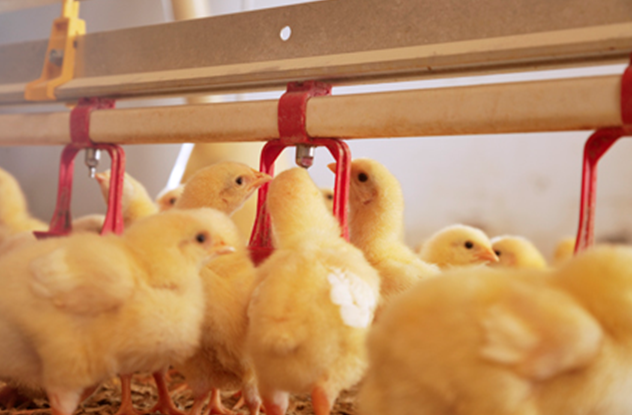



Comparison of breeder/layer coccidiosis vaccines: Part 1 -precocity and pathogenicity
Only the Paracox R 8 vaccine demonstrated oocyst output for all species at 96h in the trial.Summary Read the full article here - 2017 J. Appl. Poult. Res. 0:1–5

Only one precocious vaccine (Paracox R 8) was widely available to breeder and layer producers in the European Union (EU) from 1991 until 2015, with registration in all EU member states except Luxembourg.
Recently, 2 new products have been introduced to the market: Hipra Evalon R and a 2 part product originally designated as Huveguard R Start (now designated Mmat)and Huveguard R Plus (now designated NB).Nonattenuated (non precocious) vaccines, by contrast, are used in other parts of the world, but are not available in the EU.
Method: Three precocious vaccines (Paracox R 8, Evalon R and the combined Huveguard vaccines) were compared to each other and to a nonattenuated vaccine from North America (Coccivac RD2) with respect to precocity and pathogenicity.
Results: All 3 precocious vaccines demonstrated significantly reduced oocyst output compared to the nonattenuated breeder/layer coccidiosis vaccine.
One vaccine (Paracox R 8) demonstrated oocyst output for all species at 96 h (more precocious), while the other 2 vaccines did not have output until 24 or even 48 h later for individual species (less precocious).
When tested at 40X the manufacturer’s recommended dose (attempting to simulate the field effect of uneven application), all 3 precocious vaccines demonstrated lower lesion scores and better weight gain over the 7 d post challenge compared to the nonattenuated vaccine.
Read the full article here - 2017 J. Appl. Poult. Res. 0:1–5
Conclusions and applications
1. The results of the study show that there are marked differences between the attenuated vaccines and the nonattenuated vaccine with respect to precocity, fecundity and pathogenicity. The nonattenuated vaccine induced higher lesion scores and induced greater oocyst output compared to the attenuated vaccines.
2. Higher oocyst output increases the opportunity under field conditions for every bird in a flock to find and recycle sporulated vaccinal oocysts,which contributes to a rapid development of immunity. Higher oocyst output, however, can also result in greater pathogenicity when a nonattenuated vaccine completes successive life cycles in a flock, particularly if some of the birds remain naive following the initial vaccination.
3. The attenuated vaccines themselves demonstrated numerical differences in precocity and fecundity. Of the attenuated strains, vaccine P demonstrated the highest level of precocity, vaccine HSP the lowest level of precocity and vaccine E was intermediate. Greater precocity implies a reduction in pathogenicity due to loss of more secondary schizogony stages. The pathogenicity study demonstrated significantly better weight gain in the face of 40× manufacturer’s recommended dose for the attenuated vaccines compared to the nonattenuated D2; however, with respect to lesion scores, vaccine HSP did not differ from vaccine D2.
4. The lower oocyst output of the attenuated strains implies that the onset of immunity under field conditions may be slower, with implications on flock uniformity as well as protection against challenge. Further investigation into the comparative onset of immunity of the 3 attenuated vaccines is needed.










